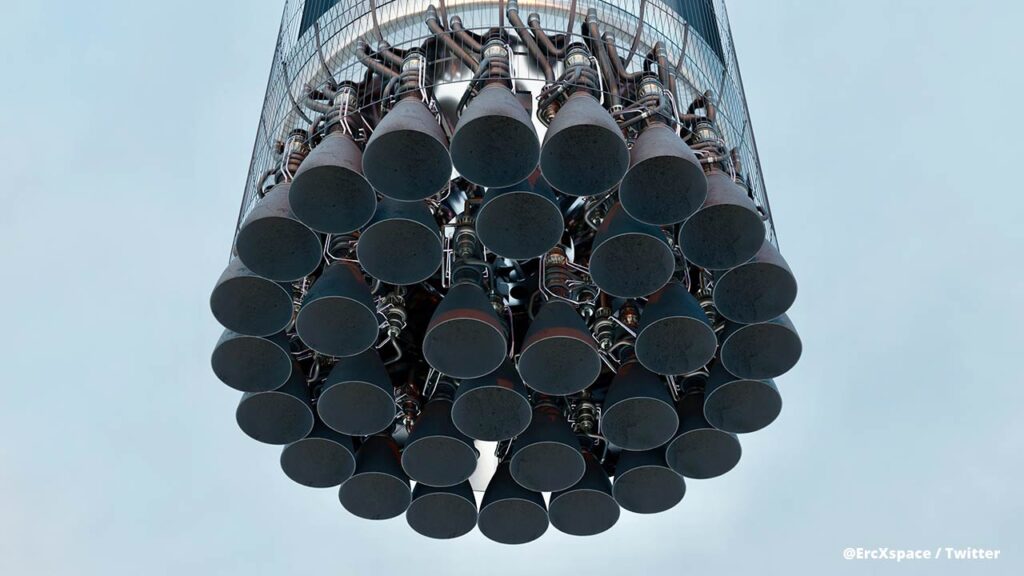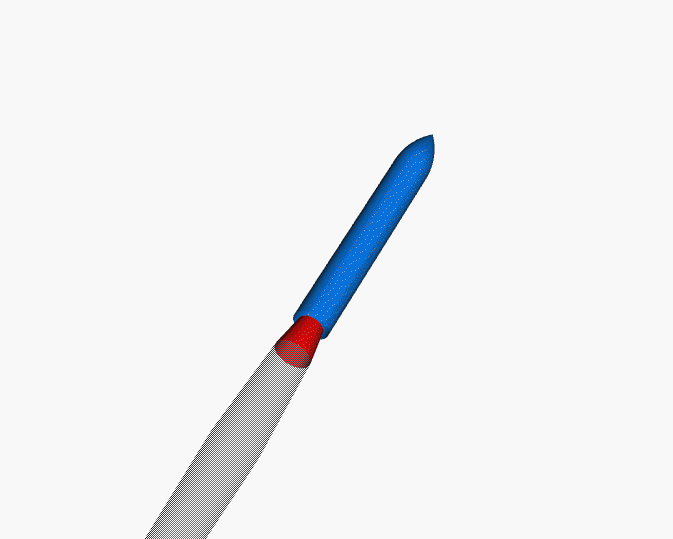SpaceX CEO Elon Musk answered a few interesting questions about the production of the Raptor engines and the increasing count of these giant engines on the Starship Super Heavy rocket booster.
The local observer Mary who hails from Starbase Boca Chica, Texas took a picture of the Super Heavy thrust puck that shows a 9 Raptor engine configuration for the inner circle at the bottom of the rocket. Adding the fixed 20 Raptors on the outside circle suggests a 29 Raptor engine configuration which Elon Musk endorsed.
“29 Raptors on Booster initially, rising to 32 later this year, along with thrust increase per engine. Aiming for > 7500-ton thrust long-term. T/W ~1.5,” Musk explained the next Super Heavy engine configuration and quantity of thrust.
Here, the discussion took an interesting turn, if SpaceX wants to test 2 Super Heavy boosters this year for orbital flight, at least 60 flight-ready Raptor engines will be required for this operation.
In response, Musk revealed that Raptor engine production is ramping up and currently 1 engine is produced every 48 hours. This makes for 3.5 Raptors a week and 14 per month at the current pace. Developing 60+ Raptor engines will require a time of 4-5 months, so the 2nd Super Heavy booster with 32 engines might come to the limelight most probably at the very end of this year.
Related: SpaceX performs first static fire on Super Heavy booster with 3 engines
3D artist and SpaceX fan ErcX Space visualized the 32 Raptor engine configuration on the Super Heavy booster bottom in a CGI render.

Elon Musk endorsed that this configuration is very close to the one that will be applied on the Starship Super Heavy rocket, “Pretty close. Inner ring is closer to center 3, as all 12 gimbal together. Boost back burn efficiency is greatly improved in this config,” he said.
The fixed engines provide a constant vertical thrust, while the gimbal engines provide thrust vectoring. The entire engine or just the nozzle is able to swivel from side to side (pitch and yaw). The gimbal thrust is used to set the angle of the rocket, we have witnessed this phenomenon clearly in the Starship SN10 high-altitude test and landing (for a visual representation see animation below).
Stay tuned for future updates on Starship and SpaceX, follow us on:
Google News | Flipboard | RSS (Feedly).



